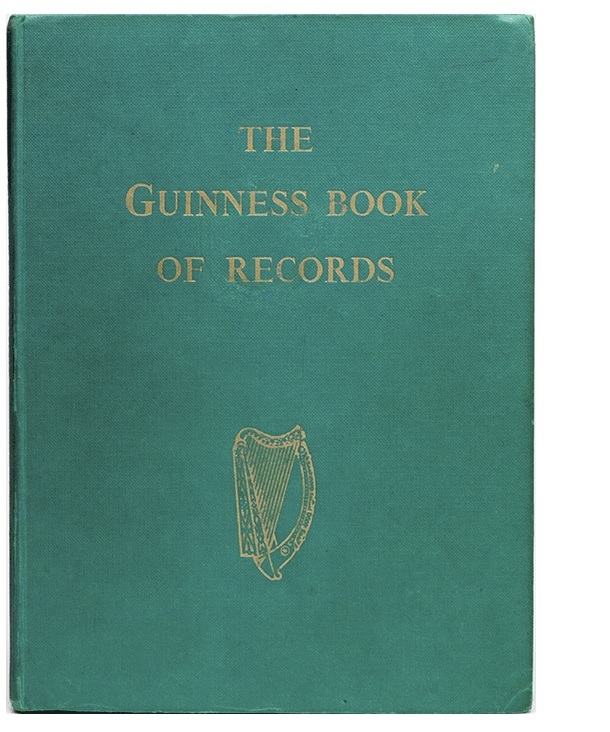
We’ve long enjoyed Guinness Stout, but until recently it never occurred to us that our favorite foamy beer was directly related to the Guinness Book of World Records. Turns out the venerable compendium of firsts, mosts, and bests was the brainchild of a Guinness brewery executive named Sir Hugh Beaver. Many decades ago, he got into a random argument down at the pub—in this case, a difference of opinion over which European bird flies the fastest (and no, it’s not the European swallow)—and was dismayed that no authoritative source existed to settle the dispute. So he resolved to create one himself. The first edition appeared in 1955. More than 140 million copies have sold since then.
All of this came to our attention a couple of months ago when a Lebanese amputee became one of the first record setters in Guinness’s new adaptive section. We got curious if any other amputees have been enshrined in Sir Beaver’s book. Turns out there are quite a few, including some who’ve made their mark in categories of human endeavor that we never knew existed. Here are a handful of our favorites:
Longest Wheelchair Wheelie
Record holder: Ross Holland
Year: 2014
During his senior year at Penn State University, Holland (a bilateral amputee) discovered that the longest documented wheelie was a mere 10 hours. Easy peasy, he thought, and proceeded to shatter that record by holding the pose for 50 hours in the student union food court. “My pipe-dream goal was 72 hours,” he said after finally dropping his wheels back to the ground, “but I don’t have enough gas in the tank to get there. Fifty hours have been a delight.”
Read more: Centre Daily Times
First Prosthetic Tattoo-gun Arm
Record holder: JC Sheitan Tenet
Year: 2016
A right below-elbow amputee since the age of 10, Tenet built a loyal clientele as a left-handed tattoo artist although he remained functionally right-handed. Some friends connected him with industrial artist Jean-Louis Gonzalez (aka Gonzal), who cobbled together parts from sewing machines and record players to create a steam-punk prosthesis with a fully functional, built-in tattoo needle. “It made me more popular,” Tenet told a film crew, “but the people who come to me are more interested in my art than the tattoo arm.”
Watch: Newsflare
Fastest Marathon on Crutches
Record holder: Larry Chloupek
Year: 2013
A childhood cancer survivor and amputee since age 7, Chloupek holds multiple records in crutch-borne racing. He’s also notched the fastest half-marathon, 10k, and 5k in this category, and he ran in the Boston Marathon a year after the 2013 bombing (which caused limb loss in more than a dozen victims). “My biggest issue are blisters on my hands,” he told Guinness. “When running with forearm crutches, one distributes the weight fairly evenly throughout the body. The hands however do receive a tough workout.”
Read more: Guinness World Records
First Bionic Feline
Record holder: Oscar the Cat
Year: 2009
Ol’ Oscar lost both hind legs to a combine harvester and was slated for euthanasia. In stepped Noel Fitzpatrick DVM, the self-proclaimed SuperVet, with a miracle cure that sounds a whole lot like osseointegration. Fitzpatrick implanted metal prostheses straight into Oscar’s flesh; skin and bone grew around them, flexible feet were attached, and the cat regained his accustomed strut as if nothing had happened. Fitzpatrick accepted the plaque from Guinness on behalf of his patient.
Read more: The SuperVet
First Prosthetic Brain
Record holder: Theodore Berger
Year: 2013
Technically not amputee-related, but we couldn’t possibly leave this one out. It sounds like a Weekly World News parody, but this thing has serious potential applications for victims of stroke, Alzheimer’s, and other cognitive injuries. Berger, a USC professor, worked for more than a decade on the device, which is described as an artificial hippocampus. “We’re putting the memory back into the brain,” he told Wired. The device has been successfully tested in rats and monkeys, and preliminary trials in humans have shown promise.
Read more: USC School of Engineering